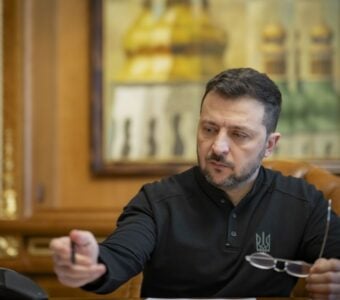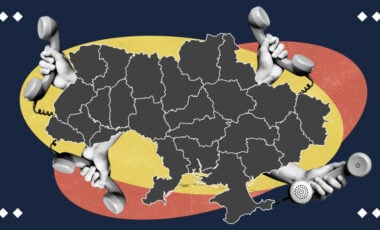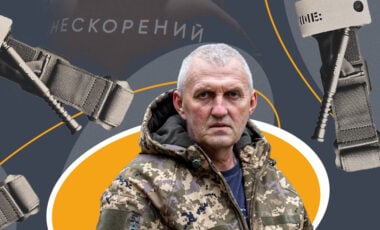Ukrainian soldiers successfully repel massive Russian attack in Donetsk region – ISW
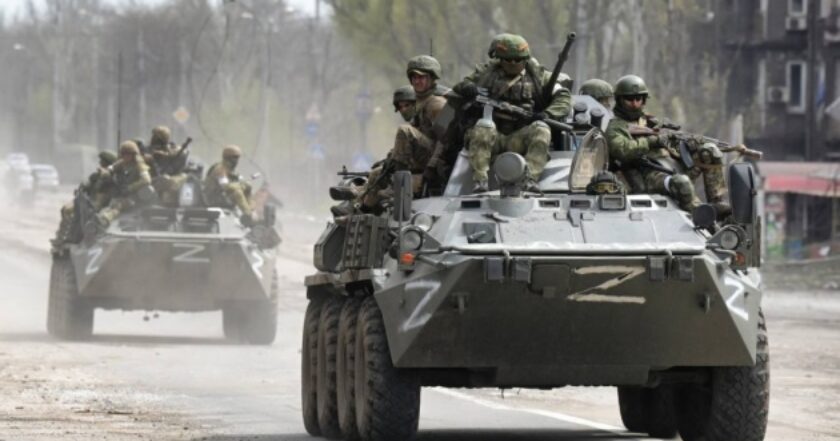
On July 24, the Ukrainian Defense Forces successfully halted the Russian army's assault on the village of Kostiantynivka in the Pokrovsk district. The attack, led by a battalion-sized Russian force, was one of the largest of its kind in the western part of the Donetsk region since October 2023.
The Institute for the Study of War (ISW) reports this, referring to geolocation footage published last Wednesday.
As noted by American analysts, the Ukrainian army prevented the attempt of about a battalion of invaders with armored vehicles to storm Kostiantynivka (Mariinka community, southwest of temporarily occupied Donetsk) after Russian troops advanced to the southeastern outskirts of the settlement.
Thus, the 79th separate amphibious assault brigade of Ukraine's armed forces, operating on the Kurakhiv front, reported that the Russian troops attacked their positions simultaneously using:
- 11 tanks,
- 45 armored fighting vehicles,
- a rare Terminator armored combat vehicle (it is noted that Russia has produced only 23 units of such equipment as of December 2023),
- 12 motorcycles,
- approximately 200 stormtrooper invaders.
They advanced from several tactical directions at dawn on July 24.
According to the brigade, Ukrainian aerial reconnaissance detected mechanized convoys at a distance. Therefore, the defenders used artillery, drones, and minefields to stop the Russian advance. Ukrainian fighters damaged or destroyed:
- six Russian tanks,
- seven armored fighting vehicles,
- all 12 motorcycles.
The occupiers retreated after the Ukrainian army destroyed the first wave of their equipment.
"The last time we watched Russian forces conduct a battalion-sized mechanized attack in the Donetsk region was in March 2024. They have not conducted a major mechanized attack in Ukraine since the early days of the four-month operation to capture Avdiiivka in October 2023," the ISW emphasized.
American experts believed that Russian troops most likely planned to continue their advance towards Kostiantynivka in an attempt to capture the town and block the T-0524 Kostiantynivka—Vuhledar route.
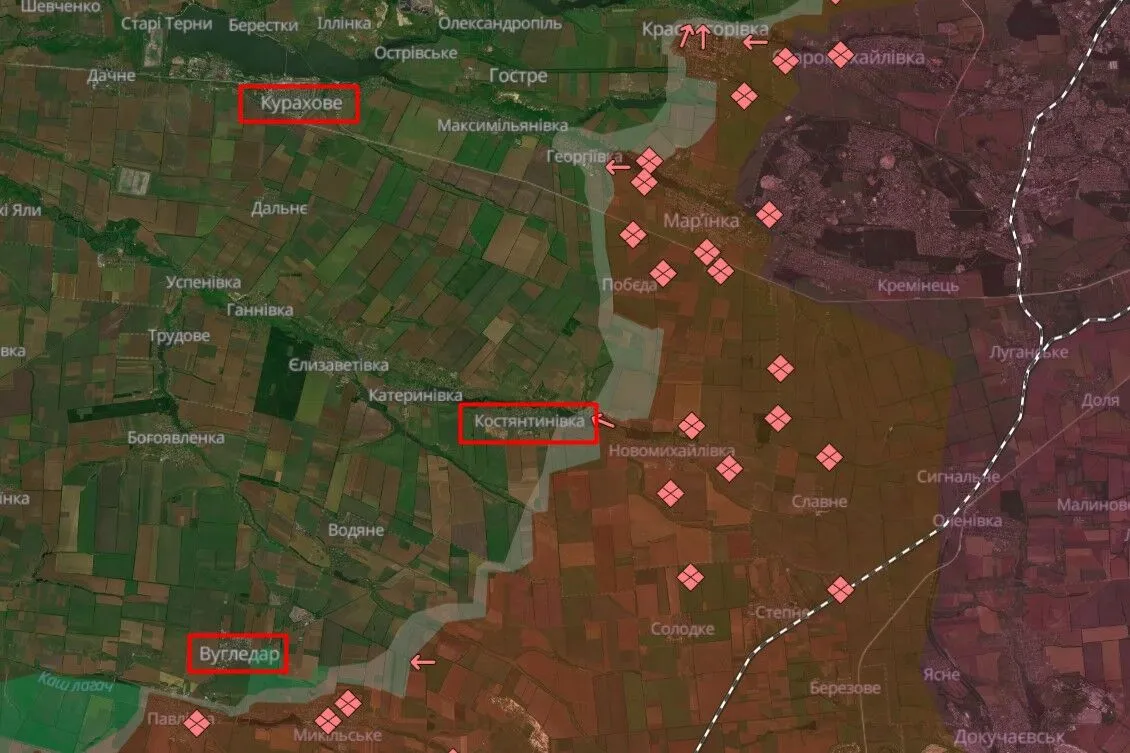
Photo: DeepStateMAP
Russian propagandists have long identified blocking the T-0524 route and disrupting Ukrainian landlines of communication to Vuhledar as the "main tactical goal" in this direction of the front.
One of the Russian "militarists" recently suggested that the Armed Forces of the Russian Federation will intensify their operations south of Kostiantynivka to support this goal and allegedly force Ukraine's armed forces to retreat from positions in and around Vuhledar.
"Russian forces are unlikely to achieve operationally significant gains in this front line area shortly, even if they force Ukrainian forces to retreat from nearby positions.
Because the surrounding area has no operationally significant targets and consists mainly of fields and isolated small settlements, there are no significant tactical heights nearby," ISW analysts noted.
According to the Institute for the Study of War, such large-scale frontal attacks indicate that the Russian military command has not fully learned the lessons about the difficulties of mechanized maneuvering on the almost transparent battlefield in Ukraine.
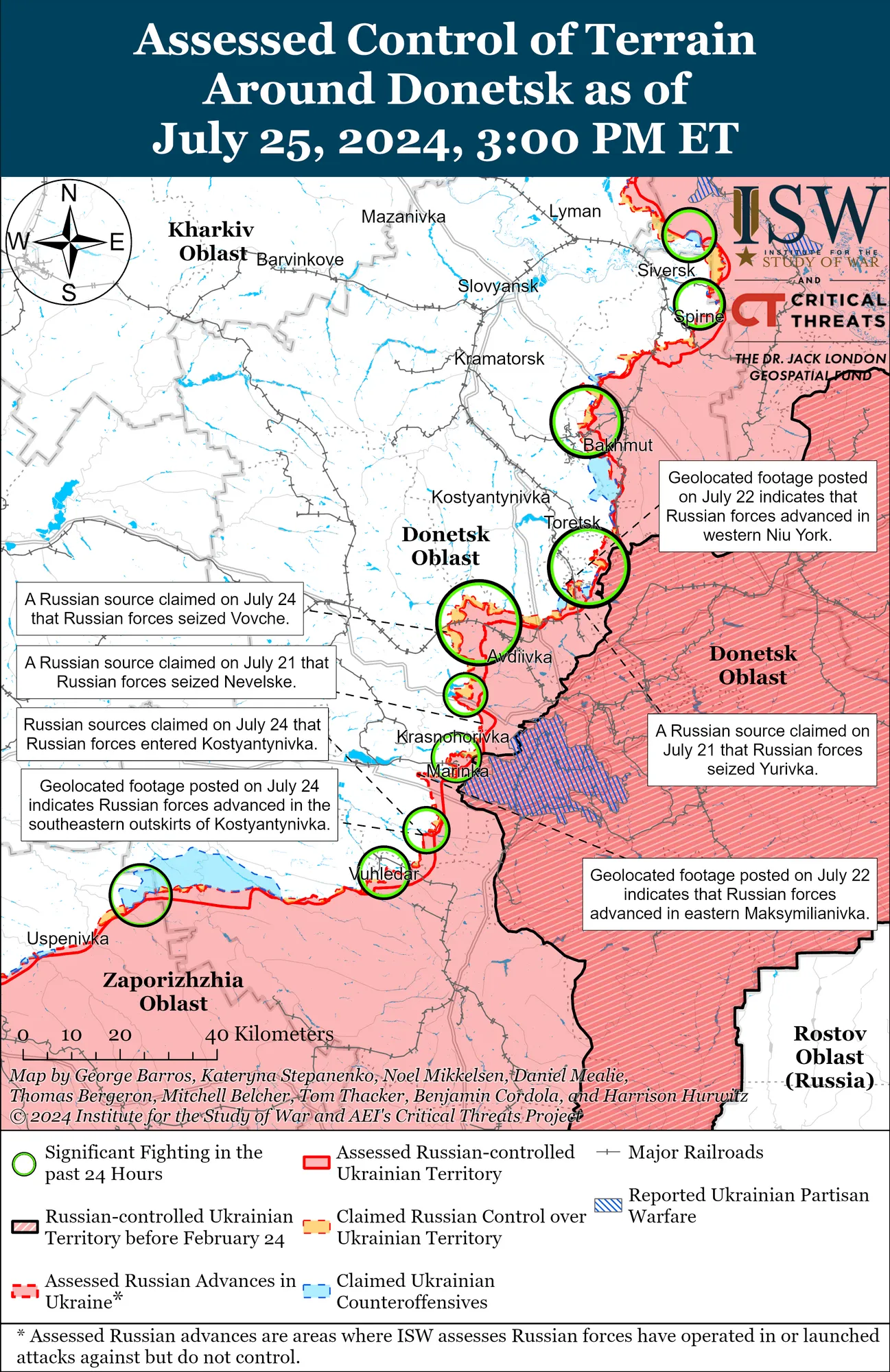
Photo: ISW
According to analysts, the Russian military command's readiness to spend a large number of armored vehicles on limited tactical tasks reflects poor long-term operational planning.
ISW noted that, in the medium to long term, restrictions on Russian equipment would make such failed mechanized attacks more expensive.
"The Russian government will likely have to mobilize the Russian economy and defense industry further if the Russian military maintains its current pace of operations in the medium to long term as Russia depletes its limited Soviet stockpiles.
However, it is not clear whether the Russian defense industry will be able to produce a sufficient number of vehicles that would withstand the high rate of equipment losses, even if additional economic mobilization is carried out," the Institute's experts added.
Also, the Ukrainian organization Frontelligence Insight said on July 25 that it observed Russian troops moving hundreds of pieces of equipment, mostly refurbished old armored vehicles such as T-62 and T-55 tanks, to the front in June and early July.
Frontelligence Insight noted that these reconditioned vehicles have not yet appeared on the battlefield and estimated that Russia might be preparing to use them in late 2024. Internal Russian documents indicate that Russian tanks damaged in the past six months (since approximately January 2024) are awaiting replacement parts. In addition, the widespread shortage of engines led to increased use of more modern T-80 tanks for repair work.
Today, the Russian military is well-equipped with ample armored vehicles, allowing them to carry out periodic mechanized assaults across the entire front line for the foreseeable future.
For reference:
It should be noted that on July 25, the Defense Forces eliminated almost 1,000 more invaders. Thus, the total losses of Russian troops since the beginning of the full-scale invasion amounted to 572,300 soldiers.

На Донеччині українські захисники 31-ї бригади вийшли з оточення біля Прогресу, - DeepState

На Донеччині росіяни за добу провели 17 атак біля Прогресу: DeepState повідомляє про захоплення села






